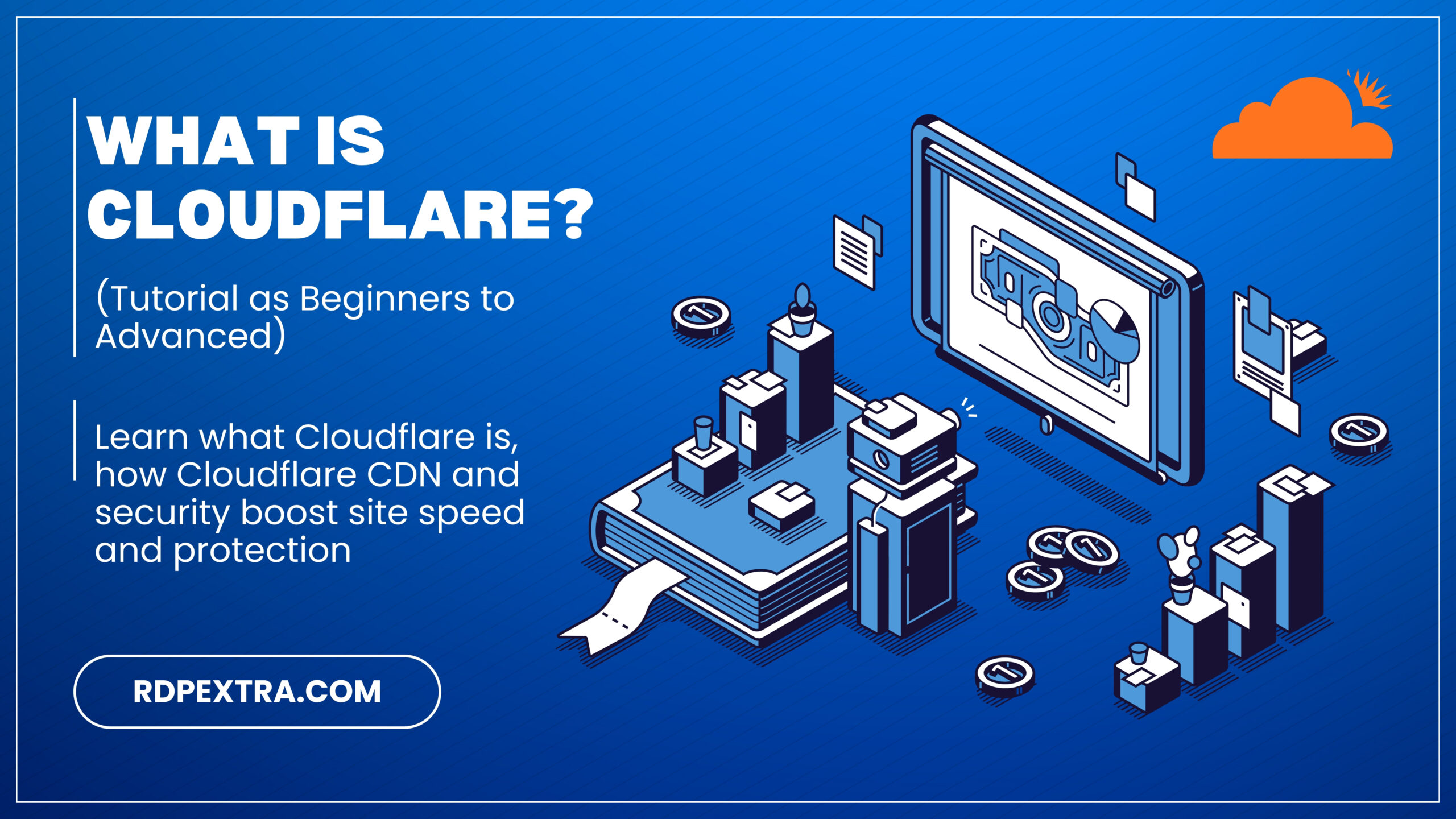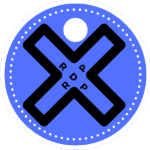
What is Cloudflare? Beginner-to-Advanced Guide
Introduction — why Cloudflare deserves your attention
Imagine a visitor in Tokyo opening your site in under half a second, while your origin server is in Frankfurt. Or a weekend DDoS attempt that never reaches your origin because it’s absorbed at the edge. Those are the kinds of outcomes Cloudflare helps deliver Cloudflare What is Cloudflare Cloudflare tutorial.
What is Cloudflare? At its core, Cloudflare is a global network that sits between your visitors and your server to speed up delivery (Cloudflare CDN, caching, edge optimization) and protect your site (DDoS mitigation, WAF, bot management). Over the years, it has grown into a platform: DNS, SSL, edge compute (Workers), analytics, and Zero Trust solutions.
This post is a practical, step-by-step Cloudflare tutorial — starting at beginner level and progressing to advanced configurations. Expect clear choices, short examples, and a decision framework you can reuse.
Cloudflare basics — how it works (simple)
Think of Cloudflare as a global traffic manager and bodyguard combined.
- CDN (Content Delivery Network): Cloudflare caches static assets (images, JS, CSS) at points of presence (PoPs) around the world so users fetch them from a nearby edge, not your origin.
- Reverse proxy + DNS: You point your domain’s DNS to Cloudflare; traffic passes through
- Cloudflare CDN edge first. Cloudflare then forwards requests to your origin as needed.
- Edge services: TLS termination, request inspection (firewall), and even running code at the edge (Cloudflare Workers).
- Always-On protections: DDoS absorption and global rate limiting happen before bad traffic hits your origin.
Analogy: Your website is a concert performer. Cloudflare tutorial is the stadium: it controls who enters, optimizes how people see the show (lighting/sound = performance), and keeps troublemakers out.
Cloudflare CDN & performance features
Key performance tools to know (and why they matter):
- Caching static assets — reduces origin requests and latency. Set smart cache TTLs.
- HTTP/2 & HTTP/3 (QUIC) — faster multiplexed requests and lower latency on modern browsers.
- Brotli compression — smaller responses for faster downloads.
- Image optimization (Polish / Image Resizing) — reduce image payload without rebuilding your assets pipeline.
- Argo Smart Routing — reduces latency by routing traffic through less congested backbone paths (paid).
- Always Online — serves cached pages when the origin is down.
SEO note: Faster pages → better Core Web Vitals → potential ranking uplift. Use Cloudflare CDN features to target Largest Contentful Paint (LCP) and First Input Delay (FID).
Cloudflare security features (the bodyguard)
Important security features and quick tips:
- DDoS protection (automatic): absorbs volumetric attacks at the edge.
- WAF (Web Application Firewall): configurable rules to block OWASP risks and known exploit patterns.
- SSL/TLS: automatic certificates; choose appropriate mode (Flexible, Full, Full (strict)) — Full (strict) is recommended when you control the origin cert.
- Bot Management: distinguishes good/bad automated traffic.
- Rate limiting & Firewall Rules: block or throttle abusive endpoints.
- Access (Zero Trust): Protect admin areas with identity checks.
Pro tip: Start with broad protection (WAF + standard rulesets) and then refine using logs/analytics to avoid false positives.
Beginner’s Cloudflare tutorial — step-by-step
A practical walkthrough for first-time users:
- Create a Cloudflare account and add your site.
- Scan DNS records — Cloudflare imports them. Verify imported records match your origin.
- Change nameservers at your domain registrar to Cloudflare tutorial nameservers.
- Enable SSL/TLS — pick Full (strict) if possible.
- Turn on caching and Brotli — default settings are safe for most sites.
- Enable the WAF (if available on plan) and apply the OWASP ruleset.
- Test your site in a private browser, then via tools like PageSpeed Insights, webpagetest.org, and Cloudflare’s analytics.
- Monitor for 24–72 hours — check firewall events and access logs for blocked legitimate requests.
Checklist (quick wins): SSL status, DNS correctness, caching toggled, Brotli on, firewall basic rules enabled, and analytics monitoring set up.
Advanced Cloudflare — features power users love
If you’re comfortable with Cloudflare tutorial basics, here’s where you get leverage:
- Cloudflare Workers: run JavaScript at the edge — useful for A/B tests, authentication proxies, and dynamic content generation without hitting the origin.
- Transform Rules & Page Rules: fine-grain request/response behavior (redirects, cache-control overrides).
- Custom cache keys: ensure dynamic pages cache correctly (avoid caching user-specific content).
- Load Balancing + Health Checks: regionally route traffic and failover origins.
- Rate limiting with custom responses: return informative throttling responses rather than generic errors.
- Logpull & Analytics: ingest Cloudflare tutorial logs into your observability stack.
- Zero Trust + Access: protect internal apps with SSO + device checks.
Example use case: Use a Worker to rewrite image URLs to Cloudflare Image Resizing for on-the-fly sized images that match device width — zero backend changes.
How to choose features & plans — my
decision logic (Chain-of-Thought style)
Here’s the practical reasoning I use when advising teams — condensed into actionable steps:
- Identify the problem: Is it speed, security, cost, or developer flexibility?
- Estimate impact and risk:
- High traffic + global audience → CDN + Argo or Business-level features.
- Frequent attacks → WAF + Bot Management + rate limiting.
- High traffic + global audience → CDN + Argo or Business-level features.
- Match features to priorities:
- Speed-focused: enable caching, Brotli, HTTP/3, Polish.
- Security-focused: enable WAF, strict TLS, and firewall rules.
- Developer-focused: Workers + custom cache keys.
- Speed-focused: enable caching, Brotli, HTTP/3, Polish.
- Budget check: Free is powerful — but the business cost of downtime or slow conversions can justify paid plans.
- Iterate & measure: Enable a feature, measure metrics (LCP, TTFB, blocked attacks), then refine.
Decision tree (short):
- Static site/blog → Free plan + caching + Brotli.
- E-commerce with PCI → Pro/Business + WAF + Full (strict) TLS + rate limiting on checkout endpoints.
- SaaS with global users → Consider Argo + Load Balancing + Workers.
This is practical, repeatable reasoning you can adapt to your site’s constraints.
Testing, measuring & troubleshooting
Key metrics and tools:
- Metrics: Time to First Byte (TTFB), Largest Contentful Paint (LCP), Cumulative Layout Shift (CLS), error rate, and origin request rate.
- Tools: PageSpeed Insights, WebPageTest, GTmetrix, Cloudflare tutorial Analytics, and origin logs.
- Troubleshooting tips:
- If content is stale: check cache TTL and cache key configuration.
- If forms break: confirm POST requests aren’t cached; use bypass rules.
- If SSL shows mixed content: enable “Automatic HTTPS Rewrites” and fix insecure asset URLs.
- If legitimate users are blocked: inspect firewall logs, whitelist trusted IPs or tune rule thresholds.
- If content is stale: check cache TTL and cache key configuration.
Pricing & plan recommendations (quick)
- Free: Great for blogs, portfolios, small businesses — includes CDN, DDoS protection, free SSL.
- Pro: Adds image optimization, mobile optimizations, WAF (basic) — good for marketers & small stores.
- Business: Advanced WAF, faster support, rate limiting, custom SSL — recommended for revenue sites.
- Enterprise: SLA, dedicated support, advanced features — for scale and compliance needs.
Rule of thumb: Start with Free to learn the platform; upgrade when a feature unlocks measurable business value (fewer errors, faster page loads, better conversion).
Quick wins & real-world examples
- Blog / Content site: Turn on Brotli + cache everything as much as possible. Result: fewer origin hits and cheaper hosting.
- E-commerce: Protect checkout with rate limiting + WAF; enable full (strict) TLS — fewer fraudulent purchases, better conversions.
- SaaS: Use Workers to handle edge authentication and lighten the origin CPU.
Self-refinement (what I’d tweak after testing)
After deploying Cloudflare on dozens of sites, I refine the approach:
- Start conservative: default WAF + caching; observe for 48–72 hours.
- Then iterate: enable aggressive image optimization or Argo only after measuring impact.
- Automate rollbacks: use Page Rules or Workers to flip configs quickly if an update breaks things.
Conclusion
Cloudflare is more than a CDN — it’s a flexible, layered platform that can improve performance, increase security, and reduce origin load. Whether you’re a blog owner who wants faster page loads or a dev team building edge logic with Workers, Cloudflare scales from simple wins to advanced, production-grade features.
Ready to implement? Grab our free, printable Cloudflare tutorial Setup & Optimization Checklist to follow the exact steps in this tutorial and avoid common pitfalls. Download the checklist and start optimizing today.— faster pages and higher availability are supportive of SEO; use proper cache headers to avoid duplicate content issues.
👉 Frequently Asked Questions
A: It can — if you ensure DNS records exposing the origin are removed and you block direct origin access. Cloudflare’s proxy IPs will be public, but your origin can be protected.
A: Not if configured correctly. Dynamic endpoints (APIs, admin paths) should be excluded from aggressive caching and use proper cache keys.
A: Yes — faster pages and higher availability are supportive of SEO; use proper cache headers to avoid duplicate content issues.

Leave a Reply